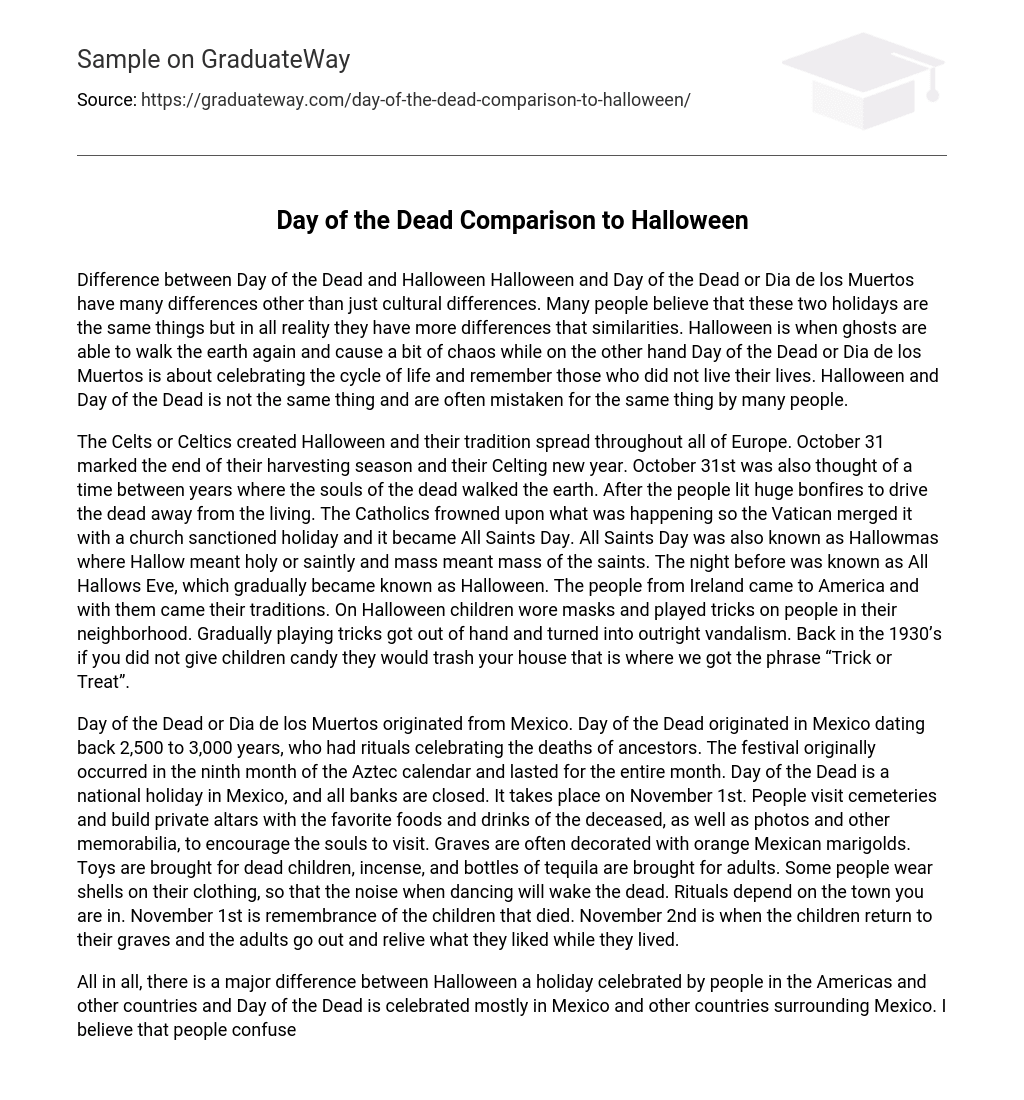Despite common misconceptions, Halloween and Day of the Dead (or Dia de los Muertos) are separate in terms of culture and significance. Halloween emphasizes mischievous spirits and disorder, whereas Day of the Dead is a festive observance honoring the cycle of life and individuals who passed away prematurely. It is important to acknowledge that these holidays cannot be swapped interchangeably, as this can cause confusion.
The Celts, also known as the Celtic people, were responsible for initiating Halloween. This tradition gained popularity throughout Europe. The Celts regarded October 31st as a significant day because it marked the conclusion of their harvest season and the beginning of their Celtic new year. It was also a time when they believed that deceased spirits roamed about. To ward off these spirits, individuals would ignite large bonfires. However, the Catholic Church did not endorse these practices and decided to merge them with an approved holiday called All Saints Day. This day was commonly referred to as Hallowmas, where “hallow” signifies holiness or saintliness and “mass” represents saints. Gradually, the night before All Saints Day came to be recognized as All Hallows Eve, which eventually transformed into Halloween.
When Irish immigrants migrated to America, they brought along their Halloween customs. These customs encompassed children donning masks and engaging in trickery towards their neighbors. Over time, these pranks evolved into acts of vandalism. In the 1930s, if homeowners refused to provide candy to children, their houses would be subject to vandalism. Hence originated the phrase “Trick or Treat.”
The Day of the Dead, also known as Dia de los Muertos, is a Mexican festival with a history of 2,500 to 3,000 years. It is a time to honor and remember ancestors who have passed away. Originally occurring in the ninth month of the Aztec calendar for an entire month, it has now become a national holiday in Mexico where banks close their doors. This event takes place on November 1st and involves people visiting cemeteries and creating personal altars adorned with their deceased loved ones’ favorite foods, drinks, photos, and cherished items. The goal is to attract the souls of their ancestors for a visit. Graves are often decorated with vibrant orange Mexican marigolds while toys are offered as gifts for deceased children. Incense and bottles of tequila are also presented as offerings for adults. During dances, some individuals incorporate shells into their clothing to awaken the dead through noise. The specific rituals may vary depending on each town’s customs. November 1st is dedicated to remembering deceased children while November 2nd focuses on activities that adults enjoyed during their lifetime.
Despite both involving the return of spirits or ghosts, Halloween and Day of the Dead have distinct differences. While Halloween is celebrated in the Americas and other countries, Day of the Dead is primarily celebrated in Mexico and neighboring countries. Some people mistakenly think that these holidays are interchangeable. However, Halloween focuses on haunting and scaring individuals by these spirits, whereas Day of the Dead is a joyful celebration that remembers those who passed away prematurely, including children and adults.





